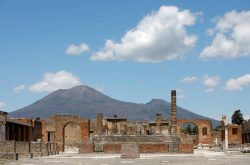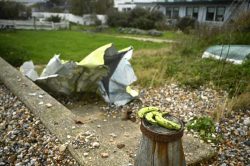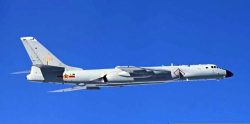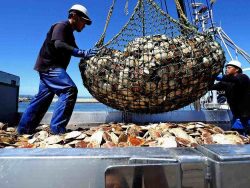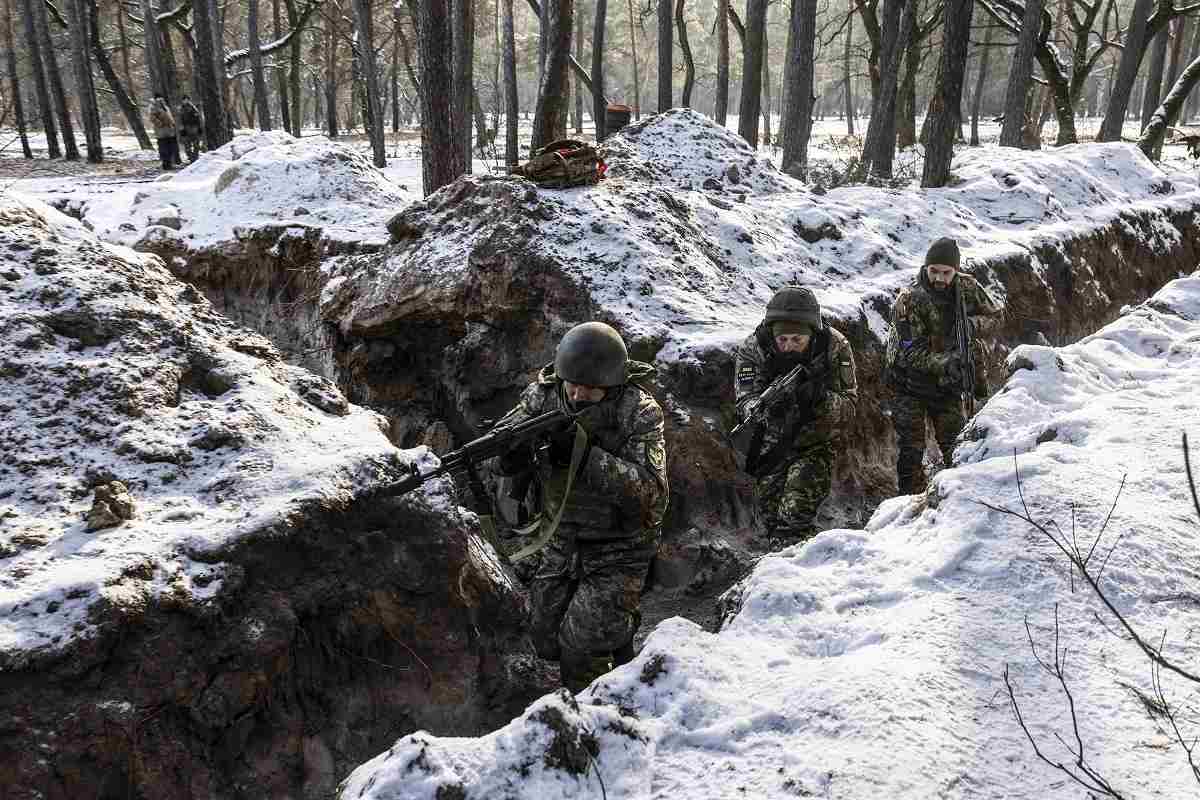
A Ukrainian infantry unit during exercises Tuesday at a camp in the Zaporizhzhia region.
11:59 JST, February 10, 2023
ZAPORIZHZHIA REGION, Ukraine – Valentyn Lymarenko and his infantry unit have already been seasoned by a year of combat, but they are grunting through exercises in this snowy trench to prepare for the next phase of fighting: a much-anticipated Russian offensive.
“We know they are coming,” Lymarenko said amid the pop of practice rifle fire. “We don’t know where.”
As Moscow struggles to turn the tide of a war that so far has largely failed, Ukrainians are bracing for a Kremlin do-over. But just where Russia will seek to land its blow remains a mystery, forcing Kyiv to ready its troops along a varied and forbidding front stretching from Belarus to the Black Sea.
From boggy northern wetlands to raging street fighting in the east to the treeless southern steppe, each range of terrain presents its own set of challenges and openings for Russian invaders and the Ukrainians intent on expelling them.
Ukrainian officials warn that Russian could initiate its attack within weeks, even hours, as the calendar ticks toward the first anniversary of the invasion on Feb. 24.
A race now appears to be on between Russian forces aiming to meet President Vladimir Putin’s demand that they regain momentum – and seize more Ukrainian territory – and the arrival of additional Western weapons that could again help the Ukrainians choke off the Russian onslaught.
Ukraine has been adamant about its ambitions to push Russia out and retake all land, including the 10,000-square-mile Crimean Peninsula that Moscow has occupied illegally since 2014. But until newly promised tanks, munitions and air defense systems arrive, including more than $2.5 billion in arms pledged by Washington, military experts say Ukrainian units are likely to remain stalled in defensive positions they settled into after driving the enemy back in Kharkiv and Kherson last fall.
“It feels like we are waiting,” said Andrii, a soldier in the eastern Donetsk region where Russians have stepped up shelling, whom The Washington Post is identifying only by first name because of security risks.
The most obvious place for Russia to point the spear tip of a new attack is a few dozen miles to the north of where Andrii is stationed, in the center of the historically Russian-speaking Donbas, according to Maj. Gen. Kyrylo Budanov, Ukraine’s head of military intelligence.
Moscow is pouring much of its swelling force – which Budanov estimates has topped 326,000 soldiers – into parts of the region Russia has controlled through proxy authorities for nearly a decade.
Many of those troops have headed into the raging battle for Bahkmut, a city on the path to Putin’s longtime goal of conquering Donbas, which comprises Ukraine’s Donetsk and Luhansk regions.
“Their whole task right now is to get to the administrative borders of the Donetsk and Luhansk regions,” Budanov said in an interview with The Post.
The Russians could also direct their attack at other lands they illegally claimed to have annexed last year in the southern Zaporizhzhia and Kherson regions, parts of which help form Putin’s much-coveted “land bridge” between mainland Russia and Crimea, which Russia invaded and illegally annexed in 2014.
Even a major thrust into the western region of Rivne, which would allow Moscow to block the flow of Western weapons rolling in from Poland, is a scenario that strategists are examining.
Ukrainian commanders are watching everywhere, eager to decipher whether signs of a surge out of Belarus to the north or across coastal Kherson in the south are head fakes or a genuine assault, requiring a quick diversion of defenders from other parts of the front.
It’s a daunting defensive posture. But 50 weeks of war – during which Ukraine has roughly quadrupled the size of its overall fighting force – and billions in donated weapons have made the country for more able to cover the long horizon of threats than it was a year ago.
“This is not like end of February, 2022, when we lacked manpower and so needed to impose priorities,” said Mykola Bielieskov, research fellow at Kyiv’s National Institute for Strategic Studies, a government-financed research institute that advises the Ukrainian president’s office on security and other issues.
“With 1 million men now in arms in Ukrainian security and defense forces, Russia cannot easily find an opening, even if they strike where there are no Ukrainian troops at all,” Bielieskov said.
Ukraine is preparing to defend against an attack that is likely to occur in one of these regions:
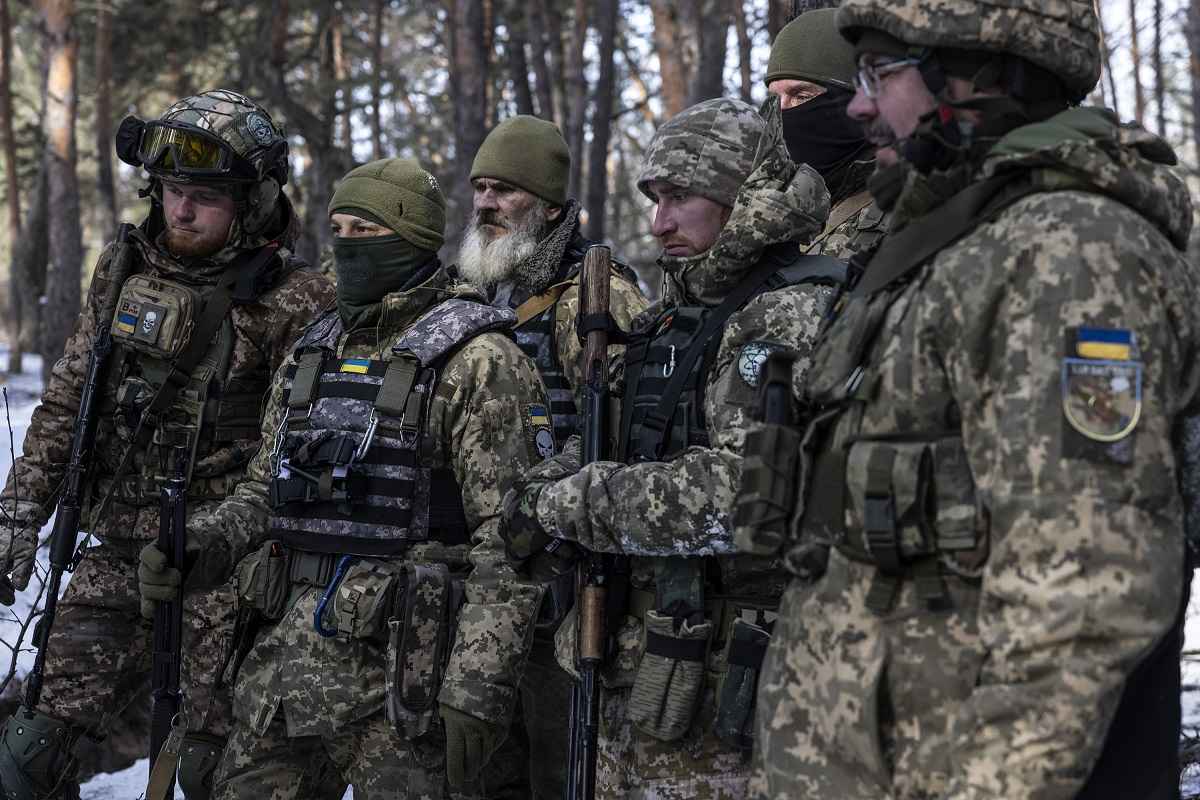
Service members participate in the training exercise.
– East
Launching the offensive at part, or parts, of the 280-mile Donbas front would let Moscow capitalize on the forces, equipment and infrastructure it has amassed here over nine years of waging war in eastern Ukraine. Analysts note it would bring maximum firepower in support of Putin’s reported directive to conquer all of Donbas by the end of March.
Russia is deeply dug in, having transformed its side of the front into a landscape of earthen barriers, deep trenches and dense ranks of the pyramidal antitank bollards known as dragon teeth. These give them fallback havens in Popasna and other villages and allows them to keep pressing west.
On that side, they face Ukraine’s own pastoral battlescape, with the low-rolling, snow-muddy fields of Luhansk and Donetsk crosshatched with trench lines and peppered with welded tank traps.
But to even reach that expanse would require the Russians to claw through a phalanx of cities where Ukrainians are already dug into military bases, abandoned houses and basements – including Chasiv Yar, Kostiantynivka, Druzhkivka, Slovyansk, and Kramatorsk.
So far in the war, Russian progress through urban battlefields has been grinding and gory, particularly the ongoing fight for Bakhmut, where each block has come with heavy casualties on each side.
Ukrainian fighters say the pace of enemy shelling has slowed around the city, possibly as munition stocks have depleted. Instead, the Russians are sending waves of fighters largely unprotected by armored vehicles, a preview of what a major offensive in the region could look like.
“We don’t have enough ammunition to kill all the people they are sending across,” said Iryna Rybakova a spokesperson for the 93rd Mechanized Brigade in Bakhmut. “They don’t seem to have much left of mortars and shells to shoot at us, but they have unlimited human resources.”
– South
The serpentine Dnieper River cuts through the southerly Zaporizhzhia and Kherson regions, which Putin claims to have annexed, forming a natural barrier that in many places is also now a front line.
For months Russian troops occupied Kherson city, only to be pushed back in November by a counteroffensive. Russia has vowed to return, but it will have to contend with drone surveillance squads that love the flat coastal planes where enemy troops often find it hard to move undetected.
“Ukrainian forces are not stationed in cities in Zaporizhzhia; the front line goes mostly through fields,” said Oleksii Dmytrashkivskyi, a military spokesman for the Donetsk and Zaporizhzhia regions. “That helps us. We’ve built a lot of fortification in these fields.”
Even after its retreat, Russia controls enough of Zaporizhzhia and Kherson to maintain the land bridge to Crimea. The Kremlin, however, has insisted that it will “liberate” both regions.
Ukraine has detected a buildup of troops in the area, including two new battalion tactical groups, but far fewer than are massing farther north, Dmytrashkivskyi said.
Lymarenko and his unit, which is part of the Zaporizhzhia Territorial Defense Force, are training in the region and keen to fight here. The region is considered one of the likely spots for Ukraine’s own next big offensive, perhaps to liberate the city of Melitopol – where several of his fighters are from – and sever Russia’s land bridge.
But the Russians have burrowed into more entrenched positions and analysts do not expect a big Ukrainian push in the winter mud. Lymarenko’s men know they can be deployed anywhere a Russian attack demands.
“We’ve already relocated 15 times,” Lymarenko said as his men practiced picking their way through a trench laced with the kind of explosive tripwires the Russians favor.
– North
Though Putin’s primary designs are concentrated on the four regions of southeast Ukraine, Moscow could reprise one of the key opening moves of it its invasion a year ago, when it sent forces pouring over the border from Belarus toward the city of Chernihiv, and from Russia toward the city of Sumy.
Ukrainians insist they are ready to stop the Russians cold.
“In February, 2022, we were a peacetime army,” said Col. Yevhenii Silkin, head of strategic communications for Ukraine’s commander of joint forces. “After a year, we have new troops, new brigades; we are fully capable of stopping an attack from the northern direction.”
The region of ponds and wetlands has been left muddy by an usually mild winter, just as it was last year when some Russian columns got bogged down on their approach to Kyiv. Others, trying to encircle Sumy, were held off by territorial defense forces.
Ukrainian military analysts do not see the north as the most likely location for an attack, and they say Russia has not amassed significant troops in the area. But Russia has bombed Sumy and Chernihiv in recent days, and it has aircraft stationed in Belarus following recent joint exercises there.
“We know they have left planes and helicopters in Belarus, but we don’t know for what purpose,” Silkin said. These northern approaches would still hold advantages for Russia, primarily the short supply routes it offers to and from the motherland. Ukraine is girding the area with trenches, tank traps, concrete barriers and other defensive tools.
“We have mined every road and tree line,” Silkin said, as well as much of the border between the three countries.
“We are not going to be friendly with Russia or Belarus any time soon,” he said.
"News Services" POPULAR ARTICLE
-

American Playwright Jeremy O. Harris Arrested in Japan on Alleged Drug Smuggling
-

Japan’s Nikkei Stock Average as JGB Yields, Yen Rise on Rate-Hike Bets
-

Japan’s Nikkei Stock Average Licks Wounds after Selloff Sparked by BOJ Hike Bets (UPDATE 1)
-

Japanese Bond Yields Zoom, Stocks Slide as Rate Hike Looms
-

Japan’s Nikkei Stock Average Buoyed by Stable Yen; SoftBank’s Slide Caps Gains (UPDATE 1)
JN ACCESS RANKING
-

Keidanren Chairman Yoshinobu Tsutsui Visits Kashiwazaki-Kariwa Nuclear Power Plant; Inspects New Emergency Safety System
-

Imports of Rare Earths from China Facing Delays, May Be Caused by Deterioration of Japan-China Relations
-

University of Tokyo Professor Discusses Japanese Economic Security in Interview Ahead of Forum
-

Japan Pulls out of Vietnam Nuclear Project, Complicating Hanoi’s Power Plans
-

Govt Aims to Expand NISA Program Lineup, Abolish Age Restriction








